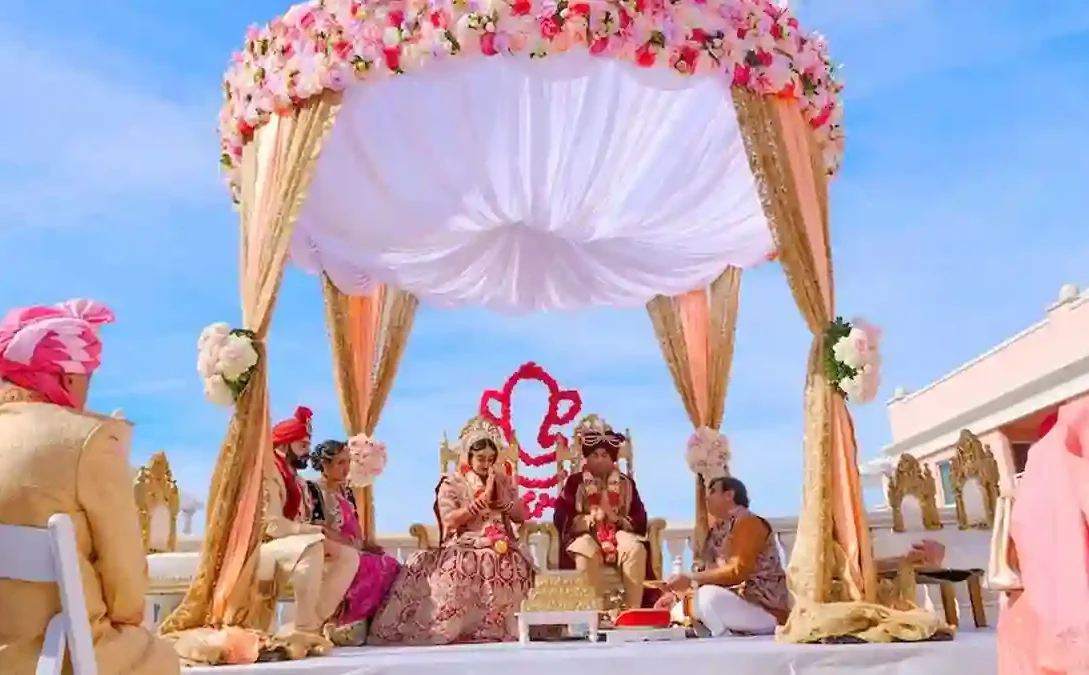Pick a date — Be flexible, if possible so that your desired dates don’t conflict with other weddings or seasonal considerations. Book your vendors — From photographers and videographers to musicians, florals and decor.
Create a detailed wedding day schedule and distribute to your MC, maid of honor, key family members, bridesmaids and groomsmen, all vendors and anyone else who should have a copy.
1. The Venue
The venue is the first thing to consider because it sets the tone for your whole event. “Choose a venue that meshes with your style,” says Easton.
It’s also important to keep your budget in mind, says Sloane. It may be tempting to go into venue searches with your dream wedding in mind, but you should only choose the one that fits within your budget.
If you want to get married outdoors, check whether your chosen venue has adequate cover in case of rain. And if you’re planning on having your ceremony and reception at different venues, make sure that the distance is short enough for guests to travel between them without a significant time gap.
2. The Officiant
Your officiant is the person responsible for kicking off the ceremony. He or she will usually start the show with some opening remarks and a brief recounting of your love story or words about marriage.
The best man and groomsmen enter next, followed by the maid of honor and ring bearer (if applicable). Finally, the bride makes her entrance accompanied by one or both parents.
Vows and Promises: The couple exchange vows and promises for their lives together. Symbolic Gestures: The couple participates in unique and creative symbolic gestures that represent their relationship.
3. The Music
While there are certain wedding ceremony traditions to follow, it is largely up to you and your officiant to determine how your ceremony will play out. You can use online tools and apps (like WeddingHappy to stay on track with tasks, AllSeated for seating charts and venue layouts and the like) to help you visualize your plans and organize them in a way that makes sense for your specific wedding.
You’ll want to decide whether you want friends or professional musicians to play the prelude, processional and recessional music. You’ll also need to decide if you want readings or surprise performances from friends or professional performers during your ceremony.
4. The Flowers
Regardless of the type of ceremony you choose, creating a wedding day timeline will ensure that everything runs smoothly. This should include a schedule for hair and makeup appointments, the order of your bridal party and children entering, as well as the key milestones of the ceremony.
Roses are a staple for any wedding and symbolise love and beauty. They also look fantastic when paired with tulips, peonies and daisies.
Lilies are popular choice for glam couples who want a long-stemmed flower with a unique shape. Orchids are another stunning option with their classic trumpet-like petals and come in a range of colours from subtle whites to daring purples.
5. The Dress
A wedding dress is one of the most significant decisions that you will have to make as a bride. You may love the first gown you try on and know right away it is “the one,” or you could spend months trying on dresses before finding the perfect one.
What matters most, though, is that you are happy with your choice and feel confident on your big day. When you look back on your wedding, the main thing you will remember is making promises to one another and how you felt when you made them.
6. The Rings
Whether it’s a sign that says “Skip the Paperwork” or a unique alternative to a traditional guest book, guests love signing creative objects at weddings. It’s a great way to give your day personality and create something special for you and your new spouse to keep.
Add personal touches to your ceremony with readings, speeches or musical performances that have meaning for you as a couple. These can be done by friends and family or professional performers. Then, exchange rings and finish your ceremony with the officiant declaring you husband and wife.
7. The Reception
The wedding ceremony is a big deal, and it requires a lot of choreography to make sure everything goes according to plan. This includes the prelude, processional, vows, and ring exchange. Taking into account the couple’s preferences and any traditions or rituals that hold meaning for them can help to create a more meaningful ceremony.
Special ceremonial elements such as a sand ceremony or tree planting can add a personal touch and celebrate the couple’s commitment to one another. A “fake send off” can also be a fun way to get the party started.














